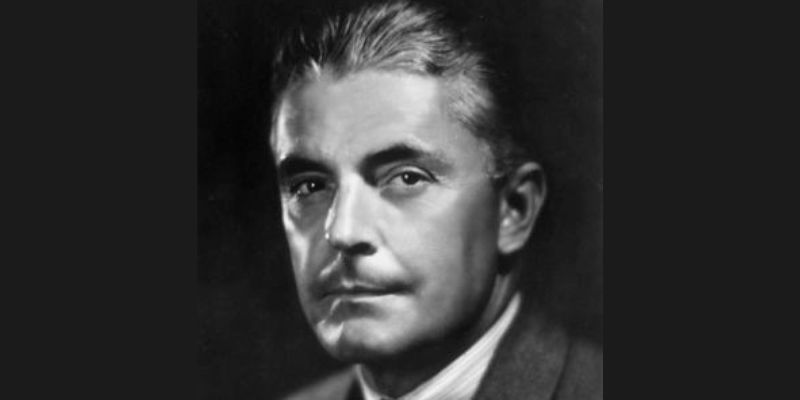John B. Watson biography and theory

John Broadus Watson (January 9, 1878 – September 25, 1958) was an American psychologist who published and popularized behaviorism. Thanks to John B. Watson, this new approach to psychology grew into one of the largest psychological schools in the world. According to Watson, psychology is limited to the objective and experimental study of the relationships between human behavior and environmental events. He conducted research into animal behaviour, raising children and the effect of advertising.
Watson was involved in several controversial experiments, including the Little Albert experiment and the Kerplunk experiment. He is also the author of the book Psychological Care of Infant and Child.
Biography John B. Watson
Childhood
John B. Watson was born in South Carolina, United States in 1878. His father, Pickens Butler was an alcoholic and left the family early in John’s childhood to live with two other women. His mother, Emma Kesiah, was a very religious woman who strictly adhered to the prohibition against drinking alcohol, dancing and smoking. During his upbringing, John was subjected to all kinds of religious training that would cause him to form a lifelong apathy against all religion.
John’s mother sold the farm and moved the family to Greenville. She did this to give John a better chance of success. This decision turned out to be important. John had the opportunity to meet a variety of people. He used the knowledge he gained to cultivate his various theories about psychology. Initially, the move was difficult for young John, mainly because of his weak social skills.
John Watson’s childhood was not easy. He was openly against religion, something that was not accepted in his environment. He was arrested twice for disorderly conduct, such as street fighting. Things also went badly at school.
Academic Period
With the help of his mother’s connections, John was nevertheless accepted to Furman University in South Carolina. His life and motivation changed dramatically and by the time he was 21 young John had a master’s degree in his pocket. He then enrolled in a graduate program at the University of Chicago. Here he studied psychology and began to develop his behavioral theories.
Watson was strongly influenced by figures such as Ivan Pavlov and Vladimir Bekhterev. He mainly used the principles of experimental physiology to investigate the different aspects of human and animal behavior.
In 1903 he published his dissertation at the University of Chicago. He remained affiliated with this university for some time as a professor.
Career
John Watson began his professional career as a psychology lecturer at Johns Hopkins University in 1908. In 1913, he gave a well-known lecture at Columbia University entitled “Psychology as the Behaviorist Views It”. In this lecture he set out the behaviorist position. According to Watson, psychology should be the science of observable behavior.
The theoretical goal of the behaviorist position is the prediction and control of behavior. Introspection is not part of the methods.
Personal Life of John B. Watson
Watson remained associated with Johns Hopkins University until 1920. He divorced his wife over an affair with Rosalie Rayner and the university asked him to resign. Watson would later marry Rayner and the two remained a couple until her death in 1935. After resigning from college, Watson went to work for an advertising agency, from which he retired in 1945.
Throughout his life, Watson failed to establish a good relationship with his children. This relationship deteriorated even further in the latter part of his life. He lived a retired life on a farm in Connecticut. Shortly before his death, he burned many of his personal papers, letters and other belongings.
Contributions to psychology as a scientific discipline
Watson was the true founder of behaviorism. This branch of psychology completely dominated the field during the period following his famous lecture. Many of the principles and methods are still used today, but after 1950 the movement gave way to other approaches.
Conditioning and behavioral therapy, among others, are still widely used to solve problems and teach skills.
Little Albert experiment
One of the most famous and controversial experiments in psychology, and certainly John B. Watson’s most famous experiment, is known as the Little Albert experiment. Part of this experiment was conditioning a small child to fear a white rat.
They achieved this by pairing the white rat with a loud and terrifying sound. They then showed that the fear could be generalized, including to other white and furry objects. There is a lot of ethical criticism on this experiment nowadays. It mainly arose because the fear was not removed afterwards. So the child remained fearful of the white rat.
In 2009, questions were asked by researchers about the child. Unfortunately, the researchers found that the child died of hydrocephalus at the age of six. This is a medical condition in which fluid builds up between the brain in the skull.
John B. Watson quotes
- “Give me a dozen healthy infants, well-formed, and my own specified world to bring them up in and I’ll guarantee to take any one at random and train him to become any type of specialist I might select—doctor, lawyer, artist, merchant-chief and, yes, even beggar-man and thief, regardless of his talents, penchants, tendencies, abilities, vocations, and race of his ancestors.”
- “Men are built, not born…. Give me the baby, and I’ll make it climb and use its hands in constructing buildings of stone or wood…. I’ll make it a thief, a gunman or a dope fiend. The possibilities of shaping in any direction are almost endless.”
- “The Behaviorist cannot find consciousness in the test-tube of his science.”
- “There are… for us no instincts—we no longer need the term in psychology. Everything we have been in the habit of calling an ‘instinct’ today is a result largely of training—belonging to man’s learned behavior.”
- “No one knows just how the idea of a soul or the supernatural started… It probably had its origin in the general laziness of mankind.”
- “Psychology, as the behaviorist views it, is a purely objective, experimental branch of natural science which needs introspection as little as do the sciences of chemistry and physics…. The position is taken here that the behavior of man and the behavior of animals must be considered in the same plane.”
- “The first aim of a good college is not to teach books, but the meaning and purpose of life. Hard study and the learning of books are only a means to this end. We develop power and courage and determination and we go out to achieve Truth, Wisdom and Justice. If we do not come to this, the cost of schooling is wasted.”
- “The behaviorist advances the view that what the psychologists have hitherto called thought is in short nothing but talking to ourselves.”
- “This dogma (the soul) has been present in human psychology from earliest antiquity. No one has ever touched the soul, or has seen one in a test tube, or has in any way come into a relationship with it as he has with the other objects of his daily experience.”
Books and publications
- 1903. Animal education: An experimental study on the psychical development of the white rat, correlated with the growth of its nervous system (Vol. 4, No. 2). University of Chicago Press.
- 1908. VIII. THE BEHAVIOR OF NODDY AND SOOTY TERNS. Papers from the Tortugas Laboratory of the Carnegie Institution of Washington, 102, 187.
- 1911. Methods of studying vision in animals (No. 2). Holt.
- 1913. Psychology as the behaviorist views it. Psychological review, 20(2), 158.
- 1914. Behavior: An introduction to comparative psychology. New York.
- 1915. Homing and related activities of birds (Vol. 211). Carnegie Inst..
- 1920. A Consensus of Medical Opinion upon Questions Relating to Sex Education and Venereal Disease Campaigns. Mental Hygiene.
- 1920. Conditioned emotional reactions. Journal of experimental psychology
y, 3(1), 1. - 1921. Suggestions of modern science concerning education. Macmillan.
- 1927. The myth of the unconscious. Harper’s Magazine.
- 1928. Psychological care of infant and child.
- 1928. The ways of behaviorism.
- 1929. The battle of behaviorism: An exposition and an exposure. WW Norton & Company.
- 1947. Conductisme.
How to cite this article:
Janse, B. (2023). John B. Watson. Retrieved [insert date] from Toolshero: https://www.toolshero.com/toolsheroes/john-b-watson/
Original publication date: 10/12/2023 | Last update: 10/12/2023
Add a link to this page on your website:
<a href=”https://www.toolshero.com/toolsheroes/john-b-watson/”>Toolshero: John B. Watson</a>











